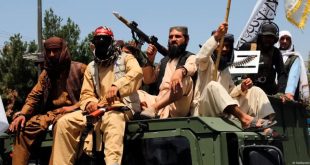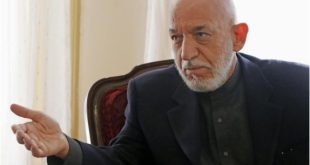By Basir Qazizada-Brothers, father, wife, students, colleagues, friends and acquaintances participated in mourning of Rahmatullah Haseeb Nasiry, a lecturer of the American University of Afghanistan, who was killed in the Wednesday’s truck bombing in Kabul. Nasiry was the father of a two-year old girl.
On Wednesday truck bombing, about 100 people lost their lives and over 500 were injured. The attack occurred during a morning rush hour. The scene was just a few hundred meters from the presidential palace among several foreign embassies and the US-led NATO headquarters. Nobody from the palace or the embassies was harmed as they were behind heavy barricades.
Politicians churned out sunny press release. But a large number of people waited in line before doors of hospitals where more than 500 were on bed of treatment. Mothers screamed louder. Wives couldn’t find her husbands’ names on the list because over 20 dead bodies were unrecognizable.
One of the worst such horrific attack since the Afghan government established in 2001, it was the latest in grim serious attacks that added to scores of civilians casualties that Taliban militants group did in 2017. In the year that from January to March, 715 civilians were killed and 1,466 wounded, the attack scored higher civilian casualties.
Consequence of the bombing, which is a part of unfair ongoing Taliban insurgents war on Afghans, is sadness, horrific and trouble life for Afghans. While most victims are breadwinners of their families, the victims’ families are mostly like future beggars on the streets. Their children join child labor, wives, and mothers remained mourners of their sorrow for ever.
Breadwinners are not only the victims; children are also among the most vulnerable victims. When Afghans are supposed to watch Cartoons, they watch news that talks on death tolls of children victims. According to United Nations, militants’ violence across Afghanistan in the first four months of the year has killed 283 children and wounded 704 others.
Afghan children raise and die when the insurgent groups use direct or indirect explosive weapons in civilian-populated areas, said statement of UN, to kill them and cause of casualties among children.
“The children were playing outside their home and found the mortar round, likely fired during fighting earlier in the day,” Tadamichi Yamamoto, U.N. special representative for Afghanistan said. “A family destroyed in seconds — this horror is just one of too many incidents documented at the onset of this fighting season.”
Generation after generation of Afghans remains victims of the Taliban unfair war. When they are children they play with bullets. When they become breadwinner of their families, they become target of the insurgent groups. More horrific story part of Afghan lives is when they join the army.
After joining army, Afghans become easier target of the insurgents who are doing nothing else of spreading of terrors. According to the U.S. statics on Afghan Security forces casualties, death toll among Afghan army is 807 and injury record is 1,328 in the first two months of year.
How they experience is tougher then we can think of it. When they stuck in some bad places, they hear no aid from the central government.
How they really feel can be seen through reading the following poem which was read by an Afghan soldier in Helmand province when Al Jazeera filmed a documentary.
“Tell spring not to come this year.
Not to cover this blood-soaked land with its shroud.
Let not the nightingales sing.
Let not the mourners be freed of their sorrow.
Blood flows from the earth beneath our martyrs.
Oh, my country.
Alas, my country.”
Death mourning of Afghan arm’s dead is simple. Top officials stick a flag on them and send them home in boxes. Then they are called martyrs of the bloody and unfair Taliban militant’s war. And the unfair war keeps taking lives of innocent Afghans.

 Afghanistan Times
Afghanistan Times



